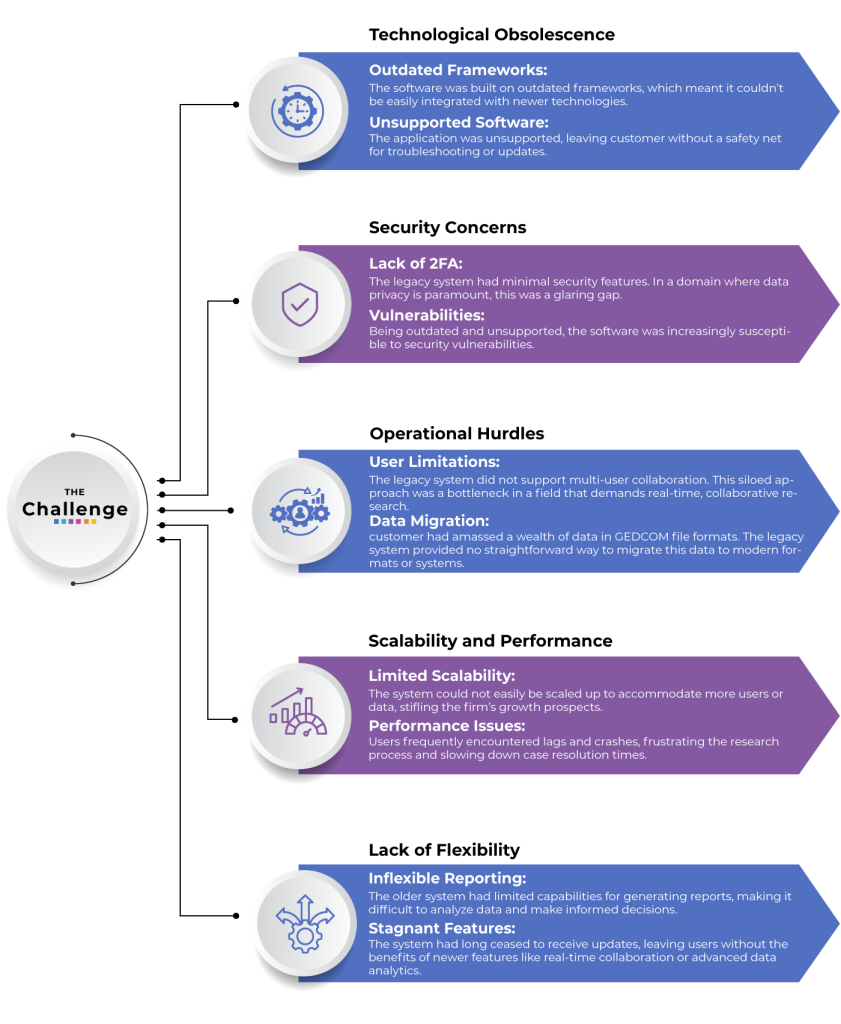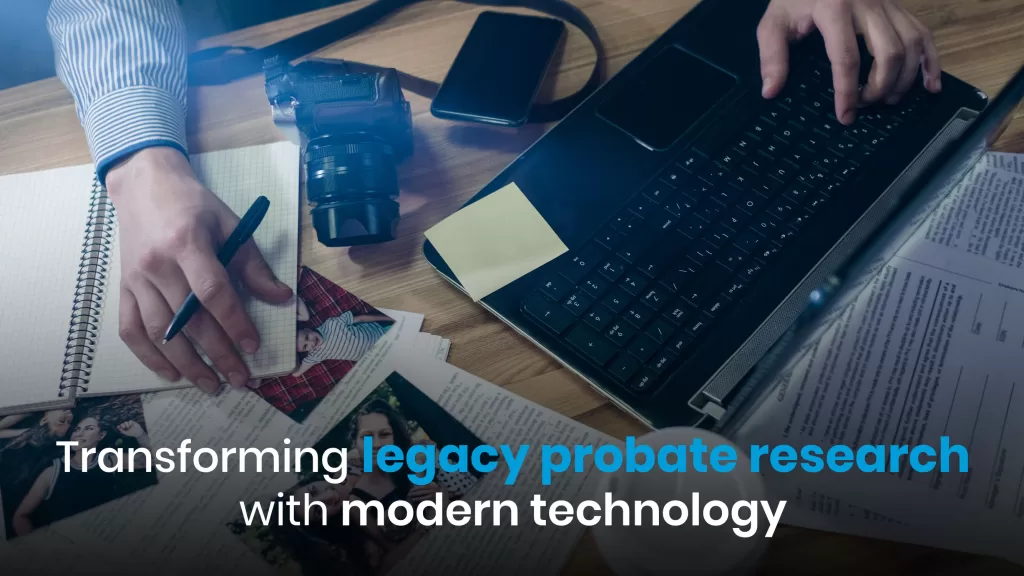Transforming Legacy Probate Research with Modern Technology
Executive Summary:
A leading firm in probate research, faced the challenge of relying on an outdated, unsupported legacy application for managing family trees and genealogy information. SBL partnered with them to modernize their system, aiming not just to meet their current needs but to provide a platform for future growth, including AI-driven optimizations.
The Challenge
When customer approached SBL, they were confronting an array of complications emanating from their legacy system. This system had not just aged, but was fundamentally misaligned with the modern demands of probate research. Here’s a deep dive into the challenges they faced: When customer approached SBL, they were confronting an array of complications emanating from their legacy system. This system had not just aged, but was fundamentally misaligned with the modern demands of probate research. Here’s a deep dive into the challenges they faced:

These challenges were not just standalone issues; they interacted in a way that exacerbated the firm’s operational inefficiencies.
The Solution:
Given the complex challenges customer faced, a mere update of the legacy system was out of the question. SBL embarked on a journey to construct a new, state-of-the-art solution that would not only address immediate issues but also be a platform for future innovations, including the integration of AI technologies.
Phase 1: In-Depth Requirements Analysis
Before diving into development, we conducted exhaustive interviews with key stakeholders. This allowed us to draft a comprehensive list of features, including:
- Security Measures: 2-factor authentication, SSL encryption, and regular security audits.
- User Role Management: Different levels of access based on roles like Admin, Case Managers, and Researchers.
- Data Representation: Advanced UI/UX designs to display complex family trees and individual profiles.
- Real-Time Collaboration: Enabling up to 25 users to simultaneously work on a family tree.
Phase 2: Tackling Constraints and Risks Head-On
We recognized early on that ignoring the inherent constraints and risks would be detrimental. Hence, we devised several mitigation strategies:
- Lock Feature: To avoid duplication, we implemented a feature allowing researchers to lock sections of the family tree they’re working on.
- Audit Trails: Every activity within the application is logged, providing a clear accountability chain.
Phase 3: Technology Stack Selection
In constructing a solution that is both robust and flexible, the choice of technology stack was critical. Each component was selected to maximize performance, ease of use, and future scalability.
- Backend: Java was chosen as the backend language, given its proven reliability and extensive libraries. It provides the robustness needed for a complex application, especially in handling secure authentication and intricate data manipulations.
- Frontend: Angular was selected for the frontend framework, known for its capacity to create dynamic, real-time user interfaces. Its compatibility with Java backend frameworks made it an ideal choice for seamless integration.
- Database: MySQL was the database of choice, given its strong ACID compliance and ability to handle complex queries efficiently. It offers both the reliability and scalability required for a multi-user, data-intensive application like this.
Phase 4: Development and Testing
The agile methodology was followed, with regular sprints and client feedback loops. Extensive testing was conducted to ensure that the system met all specified requirements and could handle real-world demands.
Phase 5: Future-Proofing the System
Recognizing customer’s ambition and the ever-changing landscape of technology, we designed the application to be future-ready:
- AI-Ready Architecture: The system is designed to easily integrate machine learning models that can predict potential missing links in family trees.
- Scalability: From the database architecture to the codebase, every aspect of the application was built with scalability in mind.
The Results:
- 10x Benefit: The new application provided a tenfold increase in efficiency and data accuracy compared to the legacy system.
- Collaborative Work: Real-time collaboration was enabled, allowing up to 25 researchers to work simultaneously on a family tree.
- Data Integrity: Advanced validation methods and audit trails ensured data consistency and accountability.
- AI-Ready:The application is designed to be future-ready, with the ability to integrate AI-driven features.
SBL’s engagement with the customer stands as a testament to how modern technology can not only replace outdated systems but also add immense value to a business by being future-ready.
Contact us
Let's discuss your project
.jpg)
